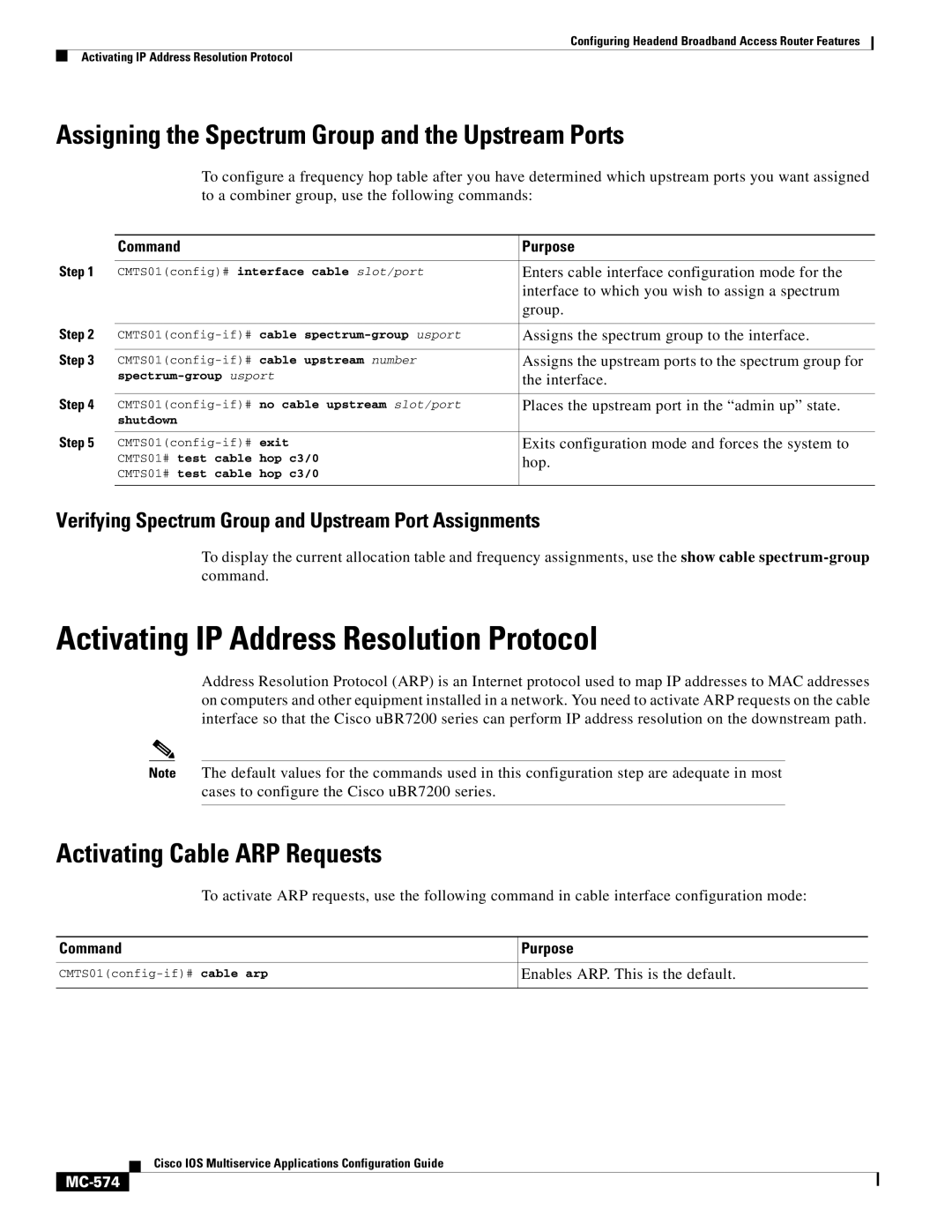
Configuring Headend Broadband Access Router Features
Activating IP Address Resolution Protocol
Assigning the Spectrum Group and the Upstream Ports
To configure a frequency hop table after you have determined which upstream ports you want assigned to a combiner group, use the following commands:
| Command |
| Purpose |
Step 1 |
|
| |
CMTS01(config)# interface cable slot/port | Enters cable interface configuration mode for the | ||
|
|
| interface to which you wish to assign a spectrum |
|
|
| group. |
Step 2 |
|
|
|
cable | Assigns the spectrum group to the interface. | ||
Step 3 |
|
|
|
cable upstream number | Assigns the upstream ports to the spectrum group for | ||
| the interface. | ||
Step 4 |
|
|
|
no cable upstream slot/port | Places the upstream port in the “admin up” state. | ||
| shutdown |
|
|
Step 5 |
|
|
|
exit | Exits configuration mode and forces the system to | ||
| CMTS01# test cable | hop c3/0 | hop. |
| CMTS01# test cable | hop c3/0 |
|
|
|
|
|
Verifying Spectrum Group and Upstream Port Assignments
To display the current allocation table and frequency assignments, use the show cable
Activating IP Address Resolution Protocol
Address Resolution Protocol (ARP) is an Internet protocol used to map IP addresses to MAC addresses on computers and other equipment installed in a network. You need to activate ARP requests on the cable interface so that the Cisco uBR7200 series can perform IP address resolution on the downstream path.
Note The default values for the commands used in this configuration step are adequate in most cases to configure the Cisco uBR7200 series.
Activating Cable ARP Requests
To activate ARP requests, use the following command in cable interface configuration mode:
Command | Purpose |
|
|
Enables ARP. This is the default. | |
|
|
Cisco IOS Multiservice Applications Configuration Guide
